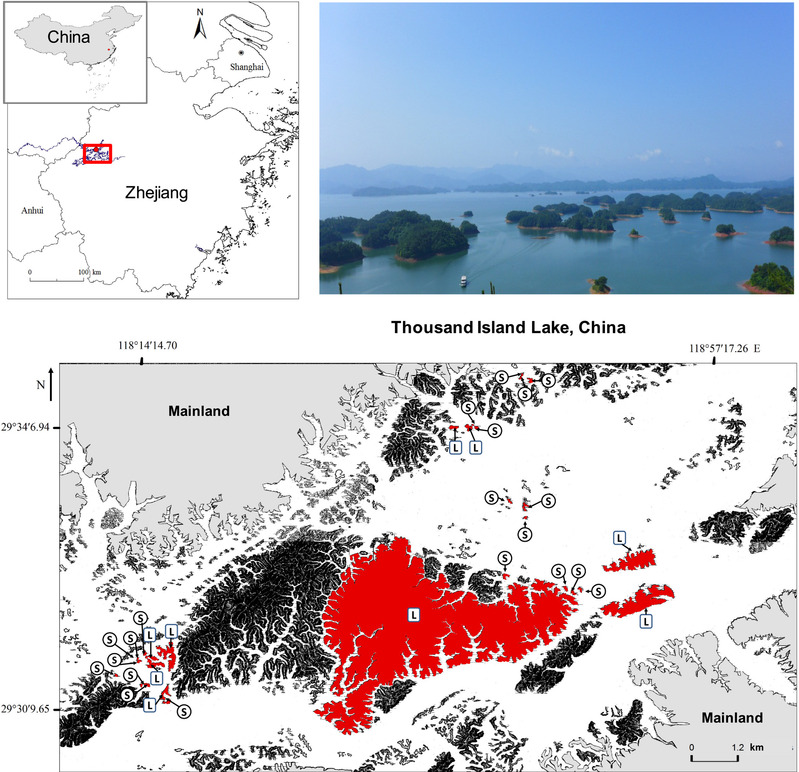Title: High beta diversity among small islands is due to environmental heterogeneity rather than ecological drift
Abstract
Aims
Both ecological drift and environmental heterogeneity can produce high beta diversity among communities, but only the effect of drift is expected to be enhanced in communities of small size. Few studies have explicitly tested the influence of community size on patterns of beta diversity. Here we applied a series of analyses aimed at testing the influence of drift versus environmental heterogeneity on beta diversity among tree communities on islands of variable size.
Location
Thousand Island Lake, Zhejiang Province, China.
Methods
We used data on mapped tree communities and environmental conditions for 20 small islands (<1 ha) and nine large islands (>1 ha) created via the construction of a hydroelectric dam in 1959. Beta diversity was calculated using abundance‐based multiple‐site dissimilarity based on the Bray–Curtis index. On the basis of the hypothesis of ecological drift among small islands, we tested for higher beta diversity among small than large islands using: (a) raw data (b) controlling for the number of individual sampled on a given island, and (c) controlling for the contiguous sampling area and thus for intra‐island environmental heterogeneity. We also tested the prediction that the relationship between species composition and environmental variables should be weaker on small islands using canonical correspondence analyses.
Results
Using raw data and controlling for the number of individuals, community dissimilarity was significantly greater among small islands than among large islands. However, when controlling for contiguous sampling area this difference disappeared. Contrary to the prediction based on ecological drift, the strength of overall composition–environment relationships was not significantly weaker for small islands in any of the analyses, and environmental heterogeneity increased faster with area among small islands than among large islands.
Main Conclusions
Despite a result using raw data that was consistent with the hypothesis of ecological drift, our full set of results clearly indicated the high beta diversity among small islands was more likely due to environmental heterogeneity rather than ecological drift. This result points to a clear need to control for sampling area among habitats of different size when testing for statistical signatures of drift.
Link: https://onlinelibrary.wiley.com/doi/full/10.1111/jbi.13404






